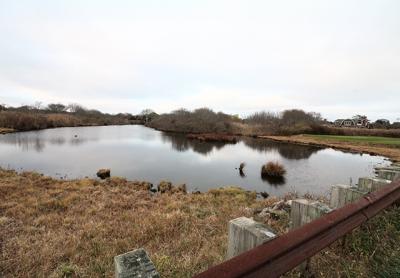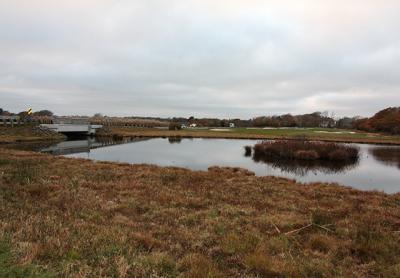Fate of Saltbox in Flux
Fate of Saltbox in Flux
An 18th-century East Hampton building that the historic preservationist Robert Hefner classifies as a typical timber-frame saltbox of the period was the focus of a hearing Tuesday night before the town’s Zoning Board of Appeals. Whether the 942-square-foot house, which sits on the edge of property at 57 Cedar Street, will be torn down or maintained on the lot as an accessory structure was the question.
Gary and Elizabeth Wohl have sold the one-acre lot for nearly $3 million to a limited liability company, AJCJ, but the sale is contingent upon the status of the historic structure, according to Christopher Kelley, the buyer’s representative. The couple built a much larger house on the site in 2004, and converted the little old building, which dates from about the same time as the Issac Miller House on East Hampton Main Street, into an artist’s studio — the only type of accessory structure allowed to exceed 600 square feet, under the zoning code. Ms. Wohl, described by Mr. Kelley as an amateur photographer, used it as such, he told the board, and the East Hampton Town Board awarded it formal designation as an artist’s studio at the time.
The new owners are not artists, Mr. Kelley told the zoning board, and do not want to maintain the building as a studio. They offered to give it away free if it were removed, but found no takers, he said. They are now seeking an area variance to allow the historic house, which has no plumbing and is used only for storage, to remain, despite being 342 square feet larger than allowed. Otherwise, Mr. Kelley said, it will have to be demolished, in order to obtain a certificate of occupancy that will allow the sale to go through.
The board was clearly supportive of the applicant’s predicament. John Whelan, the chairman, asked whether, when the time comes, the new owners could replace what is now an asphalt roof with period shingle. Mr. Kelley said that would not be a problem. Mr. Whelan also asked that any remaining plumbing lines be sealed off, which Mr. Kelley was agreeable to.
Roy Dalene asked about a quirk in the building, what looks like a tiny extension on one side. That was part of its charm, Mr. Kelley suggested. “It’s kind of cool,” he said, to step inside and look up at the rafters.
Two neighbors supported the variance request, though the board did receive one letter in opposition, from David Buda, a Springs resident. He argued that since the town board had designated the building an artist’s studio, the town board should also determine its fate.
Zoning board members voted to close the hearing, and now have 62 days to vote on the application.
Also on Tuesday, the board voted to deny one application, that of Constantine Clemente, who was seeking permission to restore a bluff face on his property at 78 Louse Point Road, using tiers of coconut-fiber blocks to stabilize 270 cubic yards of sediment, which would be placed seaward of the bluff. The application had been amended, following an August hearing, to include stabilizing the bluff with steel poles.
Mr. Clemente was one of four owners of contiguous properties on Louse Point Road to request variances needed to build a rock revetment. That request was denied in May 2015.
One of the problems with the current application, as pointed out in a memo to the board by Brian Frank, chief environmentalist for the town, is that the drainage on Mr. Clemente’s roughly two-acre property goes right down over the bluff, exacerbating its deterioration. This is largely because of excessive clearing, Mr. Whelan wrote, noting that “rain water is coming down from the lawn.”
That is a self-created hardship, in the board’s eyes, and not the recipe for the granting of a variance. In addition, “the current structure is not in imminent peril,” David Lys said.
Inserting steel poles into a bluff is not a method used anyplace on Long Island, Mr. Frank pointed out in his follow-up memo. The board voted 5-0 to deny the application.






